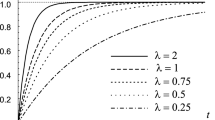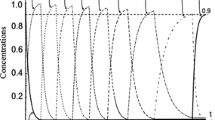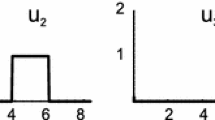Abstract
In this paper we present a method to solve a constrained optimal control problem to calculate the optimal enzyme concentrations in a chemical process by considering the minimization of the transition time. The method, based on Pontryagin’s Minimum Principle, allows us to obtain the generalized solution of an \(n\)-step system with an unbranched scheme and bilinear kinetic models in an almost exclusively analytical way.


Similar content being viewed by others
References
E. Klipp, R. Heinrich, H.G. Holzhutter, Prediction of temporal gene expression. Metabolic optimization by re-distribution of enzyme activities. Eur. J. Biochem. 269(22), 5406–5413 (2002)
M. Bartl, P. Li, S. Schuster, Modelling the optimal timing in metabolic pathway activation-Use of Pontryagin’s Maximum Principle and role of the Golden section. BioSystems 101, 67–77 (2010)
D. Oyarzun, B. Ingalls, R. Middleton, D. Kalamatianos, Sequential activation of metabolic pathways: a dynamic optimization approach. Bull. Math. Biol. 71(8), 1851–1872 (2009)
M. Llorens, J.C. Nuno, Y. Rodriguez, E. Melendez-Hevia, F. Montero, Generalization of the theory of transition times in metabolic pathways: a geometrical approach. Biophys. J. 77(1), 23–36 (1999)
N. Torres, Application of the transition time of metabolic systems as a criterion for optimization of metabolic processes. Biotechnol. Bioeng. 44, 291–296 (1994)
R. Vinter, Optimal Control, Systems and Control: Foundations and Applications (Birkhäuser Boston Inc., Boston, 2000)
H. Maurer, C. Buskens, J.H.R. Kim, C.Y. Kaya, Optimization methods for the verification of second order sufficient conditions for bang-bang controls. Optim. Control Appl. Meth. 26, 129–156 (2005)
A. Zaslaver, A. Mayo, R. Rosenberg, P. Bashkin, H. Sberro, M. Tsalyuk, M. Surette, U. Alon, Just-in-time transcription program in metabolic pathways. Nat. Genet. 36(5), 486–491 (2004)
Author information
Authors and Affiliations
Corresponding author
Rights and permissions
About this article
Cite this article
Bayón, L., Grau, J.M., Ruiz, M.M. et al. Optimal control of a linear unbranched chemical process with \(n\) steps: the quasi-analytical solution. J Math Chem 52, 1036–1049 (2014). https://doi.org/10.1007/s10910-013-0279-8
Received:
Accepted:
Published:
Issue Date:
DOI: https://doi.org/10.1007/s10910-013-0279-8




